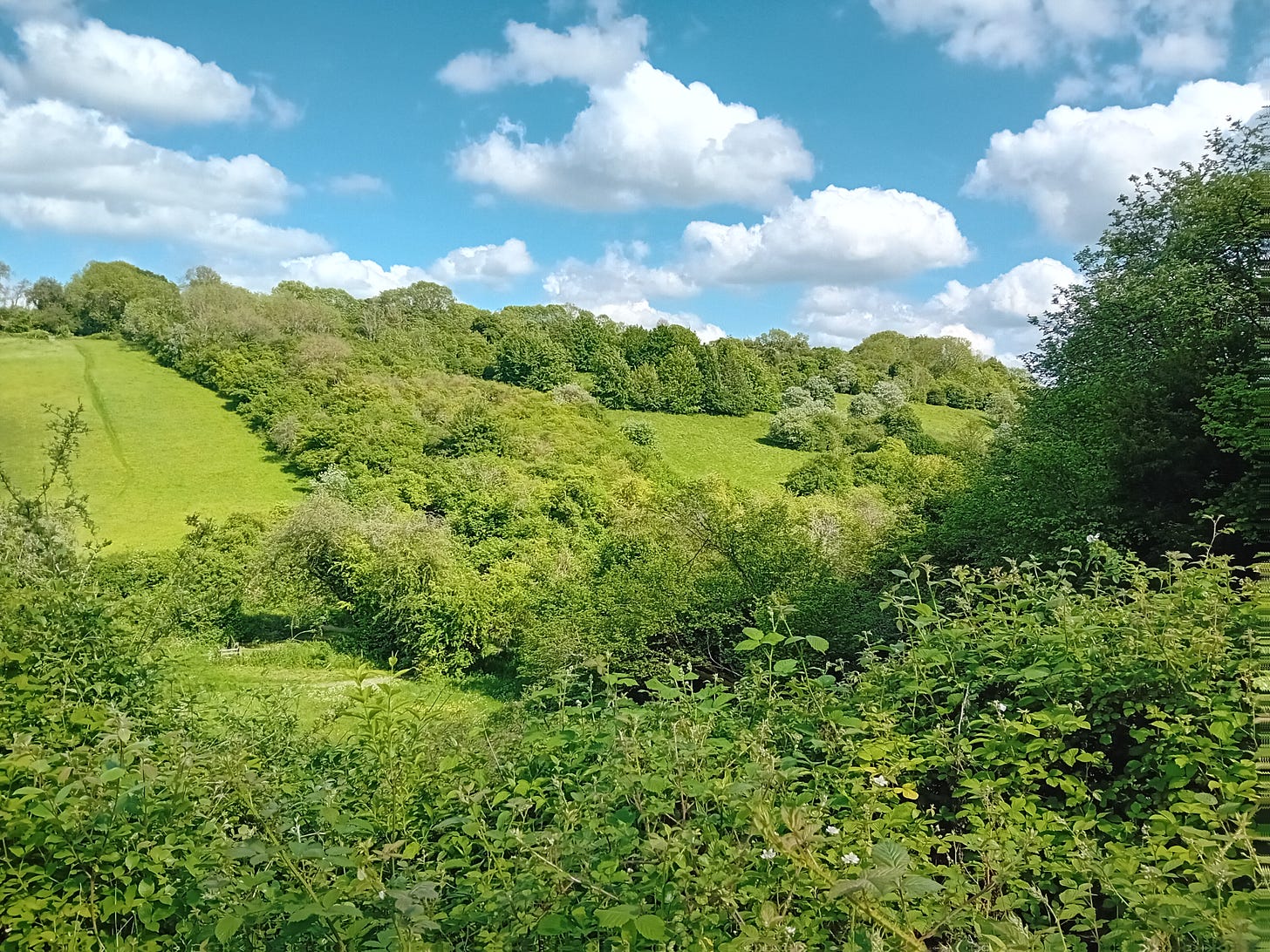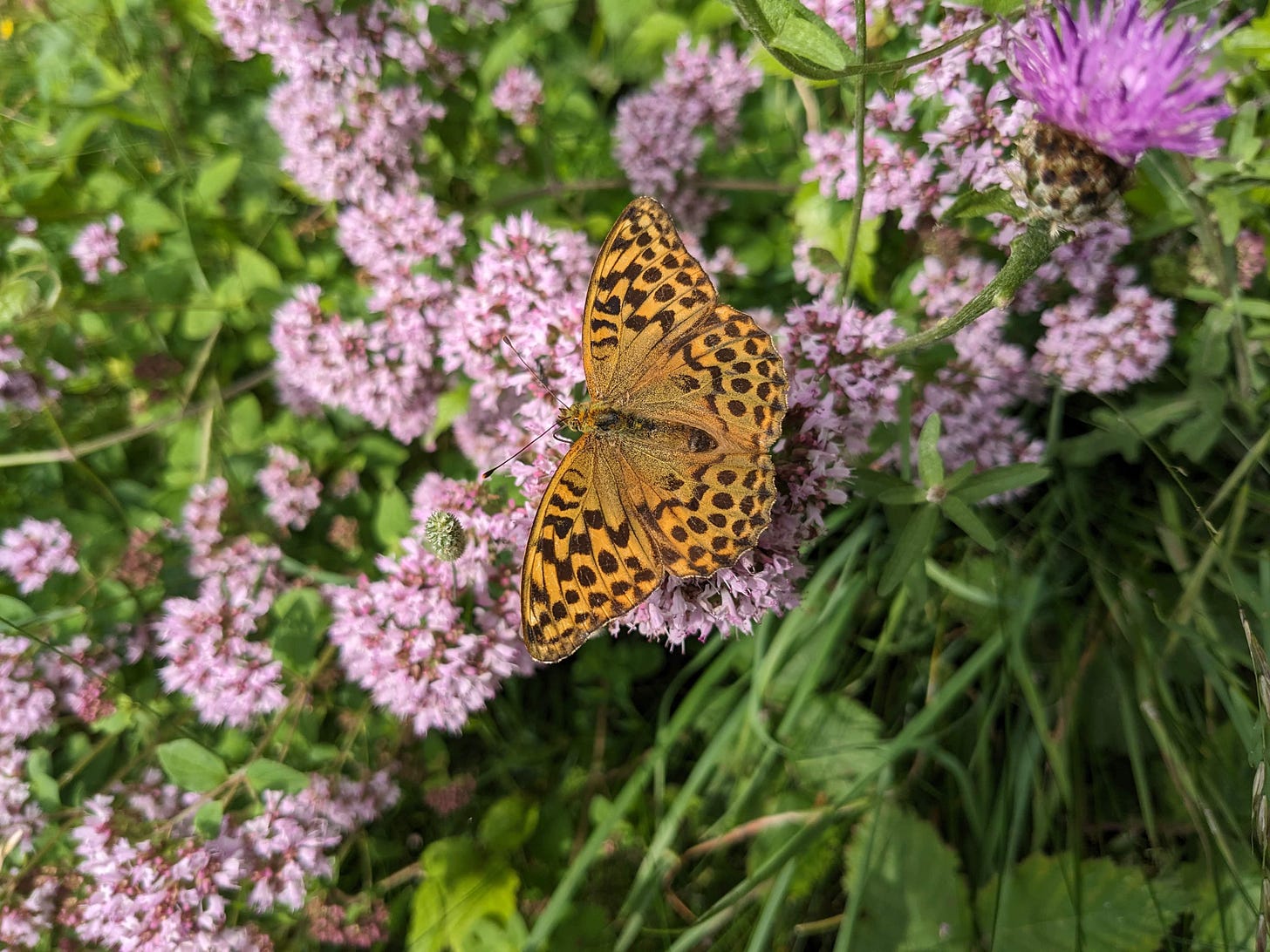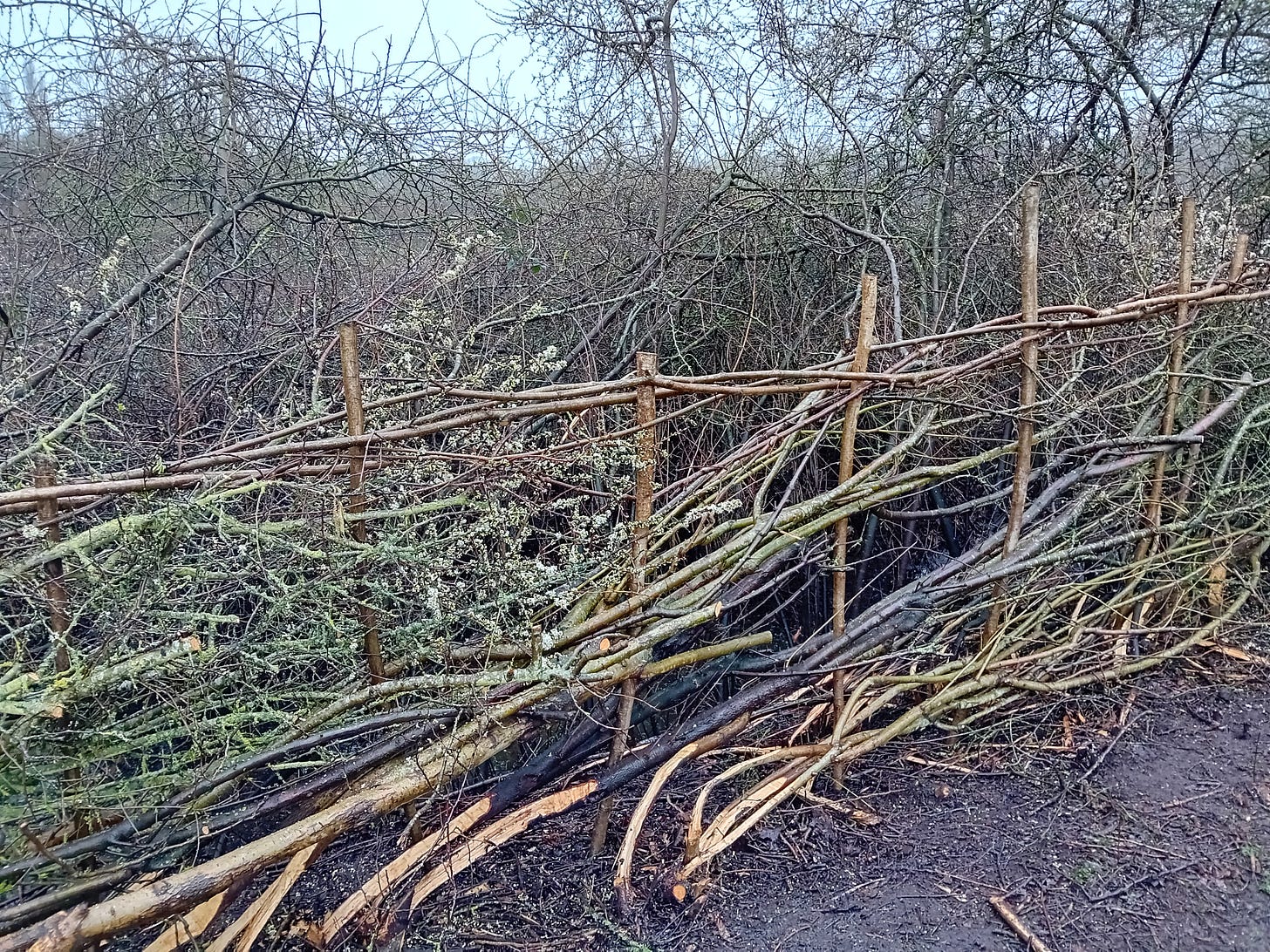Why nature sometimes needs a helping hand?
On the way in which habitats have changed over time and why we need to manage them now
One of the things we sometimes discuss while we are conservation volunteering is why we put so much effort into cutting back vegetation which will just regrow again in a few months’ time. Why bother restoring habitats to a certain state? Wouldn’t it be better just to let nature take its course?
One reason is that many of the open spaces we care for get lots of visitors and if we didn’t cut back brambles and other vegetation, paths would soon be overgrown and these places would be, at best unwelcoming, and at worse dangerous for people to spend time in. That’s important because we need people to visit and treasure these places if they are going to be willing to defend them against any future threats. But there is often another and even more important reason why we need to intervene and that’s simply because humans have intervened so much in the past.
Many of the habitats we think of as natural are in fact the result of centuries or more of human activity. Some of the remotest parts of Highland Scotland were being farmed in Iron Age times. Even in the Amazon Rainforest, there is evidence that indigenous people have long been growing fruit trees and medicinal plants. There is probably little real wilderness left in the world, and almost certainly none in Britain.
When people relied on commons and woodlands for their firewood, fodder and more, they cared for these places in a way that ensured they would continue providing for them and their successors for many generations to come – coppicing and pollarding the trees to encourage re-growth and taking only what they really needed and would definitely be used so they could ensure there would be supplies available in future.
During the many centuries that these practices were widely used numerous species of wildlife - wildflowers such as Common Dog-violets, butterflies such as Silver-washed Fritillaries and many more - evolved to take advantage of these cycles of coppicing and regrowth. The lack of management in much of our woodlands today has led to a reduction in the kind of habitats these species rely on – the new growth following coppicing, open woodland glades, and so on.
There was a similar pattern in the farmed landscape where species evolved to take advantage of practices which, until recently, had changed only very slowly over the centuries, allowing wildlife to thrive alongside the production of food. Hedgerows created to contain livestock provided shelter for dormice and hedgehogs. Frogs, newts and toads made their home in the ponds dug to provide water for farm animals. Unploughed field edges allowed space for cornflowers and poppies to grow, supporting a rich variety of insect life in summer which in turn fed numerous species of birds. Even during the winter months spilt grain provided sustenance for birds such as finches and buntings. Then, in the second half of the twentieth century agricultural practices changed rapidly. Hedgerows were removed and arable fields were converted to permanent pasture. Mechanisation and the extensive use of chemicals became commonplace. Farms rapidly became far less welcoming places for wildlife.
The eradication of some species such as wolves and the introduction of others such as sheep is another way in which human intervention has had a significant impact. Certain habitats, such as the chalk grasslands of the South Downs, are reliant for their existence on the animals that traditionally removed most of the young woody vegetation. The downland landscape was created by the clearing of woodland as far back as Neolithic times and has been grazed by sheep for centuries. But the abandonment of sheep farming and the almost complete annihilation of the wild rabbit population as a result of myxomatosis, meant that grazing largely ceased in some places during the first half of the twentieth century.
Without the grazing that had previously kept them under control, Hawthorn, Blackthorn and other scrubland plants started to become more established. There was a real risk of losing many of our chalk grasslands and the species which had evolved to take advantage of this kind of environment, such as Chalk Hill Blue butterflies and rare plants like Early Spider Orchids and Round-Headed rampions. One of the key drivers for the establishment of conservation volunteering in the 1950s were the concerns about the need to prevent habitats like these from becoming completely overgrown.
Many of our volunteering tasks today such as felling trees, copicing or hedge-laying replicate the activities that helped create habitats such as woodland glades and heathland in the first place. At other times we’re standing in for the species whose activities shaped these landscapes in the past, but which are no longer around today. The aim is always that creating the right conditions will give the species who rely on these habitats more chance to thrive, and in an ideal world those species would be able to find their own way to the homes provided for them. But the world that humans have created is far from ideal for other species. That’s why special programmes are sometimes needed to support the return of species, like the Water Voles I wrote about earlier in the year and in my next post I’m going to be looking at the topic of species reintroductions in more detail.
Regular readers of Stories of Coexistence may have noticed my absence over the last few months. The very sad reason for this is that my mother died in mid-June after a short illness and I’ve done very little writing since then. It is the natural order of things that our parents should die before us and I’m of an age where most of my contemporaries have lost at least one parent - many have lost both - but it has still come as a shock. I miss her very much.
To finish….
…a few things I’d like to share:
I really enjoyed the recent episode of Martha Kearney’s This Natural Life on BBC Radio 4 in which she visits Hampstead Heath with the musician and field recordist Cosmo Shedrake. As well as featuring lots of fascinating recordings of the sounds of the natural world including plants photosynthesising, the programme demonstrates that those who are lucky enough to live near somewhere like Hampstead Heath can still have a childhood filled with wildlife even while growing up in London. You can listen to the programme here.
The urban rewilding organisation Citizen Zoo is working with a researcher at the University of Brighton to understand people’s attitudes to White Storks in London. I enjoyed seeing these birds at Knepp and have also seen them nesting on rooftops in small towns in other European countries so it’s interesting to consider the potential for them to thrive in the capital. There’s a survey here where you can share your thoughts about storks in London.
Finally, a good news story about a new species of butterfly that has been spotted in the UK for the first time. The Southern Small White, so-called because it was previously found only in Southern Europe, was first found north of the Alps in France and Germany in 2008, then in the Netherlands in 2015 and Calais in 2019 before finally making its way across the Channel in what’s being described as an “ecological leap”. The first confirmed UK sighting was in Suffolk in early August 2025 but it’s not clear yet whether the species is here to stay.





That's very true, although we do have a big impact on other parts of nature.
We humans are part of nature and not separate from nature.
Think of us humans as you do beavers. 🦫